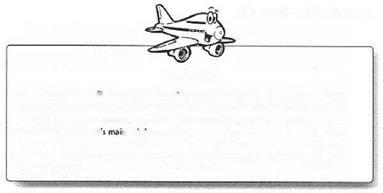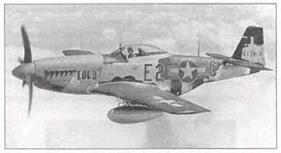Wild Mustangs: The P-51 Fighter Plane and Chuck Yeager
There may never have been an airplane more dashing and deadly than the P-51 Mustang, and the same can be said of a young pilot named Chuck Yeager. A naturalborn pilot with eagle – sharp eyesight, Y eager also possessed a cool head in the most dire emergencies.
|
The sleek, growly P-51 Mustang was among the most beloved airplanes of World War II. It continues to thrive today in the form of restored “war birds” and air race planes. |
Born Charles Elwood Yeager in Myra, West Virginia, Yeager grew up a few miles down the Mud River in Hamlin. In the West Virginia hills, young Chuck developed the unmistakable accent that has been imitated by thousands of American pilots who came to idolize everything about Yeager.
Though he went on to fly virtually every military airplane that the Air Force flew, Brigadier General Chuck Yeager began his flying career as the pilot of a P-51 Mustang. Yeager and the P-51 Mustang rose to fame together. His 357th Fighter Group was among the first units to fly the new fighter, a sleek silver streak with a deep-throated growl.
Yeager began his military flying career in the days when American pilots still followed their propellers into dog fights, well before jets became common for U. S. pilots. Yeager shot down his first enemy airplane in March 1944, and the next day was shot down himself behind enemy lines. The French Resistance smuggled Yeager to Spain, a neutral country, and finally back to his unit.
By the war’s end, Yeager shot down 13 enemy airplanes, including one German jet fighter that could outspeed the Mustang but not outmaneuver it. And of Yeager’s 13 kills, 5 came in a single day!
 Plane Talk
Plane Talk
Several models of P->l Mustangs were built during the war, and with 14,200 of them rolling off assembly lines, the fighter served the U. S. military into the Korean War and beyond. The fastest Mustangs could fly at speeds of 487 miles per hour with a range of
 n mission was to guard clusters of bombers from attack by
n mission was to guard clusters of bombers from attack by
enemy aircraft while en route to their targets. There wasn’t a more welcome sight for a nervous formation of bombers than the distinctive arrow-sleek Mustangs flying high and alert for danger.
 |
The X-l
On Course
After the war, Yeager turned in his P-51 wings for a test pilot’s helmet. He began working on secret airplane projects that were meant to give the United States a head start on the Russians. One of the races between the two rival nations was to fly faster than the speed of sound. A number of pilots had already flown faster than the speed of sound, but had done it in steep attack dives that often ended in disaster. Researchers worked to develop an engine powerful enough to overcome the dense compression of air molecules, called the “pressure wave,” that built up ahead of a fast-traveling plane. Yeager, working as test pilot of the X-1 rocket plane, nicknamed Glamorous Glennis after his wife, finally broke the sound barrier in level flight in 1947—and survived to tell the tale. Researchers had found the right engine, and in Chuck Yeager, they had the right pilot.
Chuck Yeager retired from the Air Force, but he is still the most visible and respected symbol of a time when daring men risked their lives to push the boundaries of flight. Yeager continues to embody what author Tom Wolfe called The Right Stuff.












